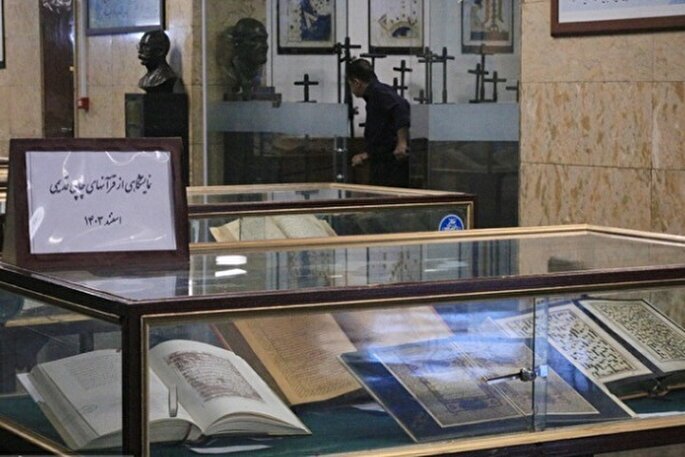Exhibition Showcases Historic Printed Qurans at University of Tehran

According to a statement from the university’s public relations office, the exhibition showcases approximately 80 old printed Qurans. Of these, 59 copies originate from countries including Iran, India, Pakistan, Turkey, Lebanon, and the United States.
The display also includes rare editions selected from the library’s collection, including five lithographed Qurans. The oldest among them, dating back nearly two centuries, was printed in Tabriz in 1249 AH (1833 AD), with other lithographed editions printed between 1249 and 1315 AH.
Highlighting the exhibition’s historical significance, Hojat-ol-Islam Rasoul Jafarian, head of the Central Library and Document Center and professor of history at the University of Tehran, noted that religious texts were among the first books to be printed.
Read More:
“For Muslims, the Quran was one of the earliest books to be published in print,” Jafarian said. “From this perspective, this exhibition holds particular historical value for those interested in the evolution of printed texts.”
Discussing the initial resistance to printed Qurans, Jafarian explained that early objections were both religious and economic. “There was a belief that printing the Quran might reduce its sacredness. Additionally, calligraphy was a major source of income for scribes, and the introduction of printed Qurans threatened their livelihood,” he said. “However, modern printing technology ultimately prevailed, making the Quran widely accessible.”
Jafarian also noted the artistic and functional changes that accompanied printed editions. “Printed Qurans introduced innovations such as colored text, translations, and detailed indexes, making the holy book more accessible to readers,” he said.
Read More:
The exhibition runs from March 2 to March 16 on the ground floor of the Central Library and Document Center at the University of Tehran. It is open to all visitors interested in exploring the history of printed Qurans.
4269654



